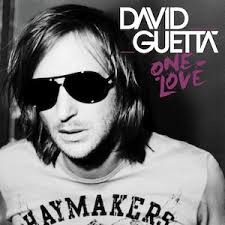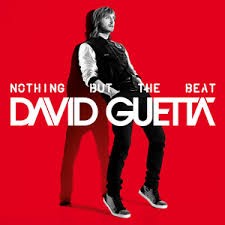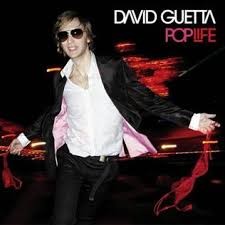Five of the best from David Guetta
Five of the best from David Guetta
David Guetta music artist and producer has transformed the global EDM landscape. From underground clubs to chart-topping hits, his albums have defined generations. This review explores the evolution of David Guetta music, album by album, revealing how he helped shape modern pop and electronic sounds.
Most Asked Questions
What is David Guetta's real name?
Pierre David Guetta.
How old is David Guetta?
He was born on November 7, 1967, making him 57 years old as of July 2025.
Where is David Guetta from?
He is from Paris, France.
What genre of music does David Guetta produce?
He primarily produces EDM, house, and dance-pop, with recent ventures into future rave.
What are David Guetta's most famous songs?
"When Love Takes Over," "Titanium," "Sexy Bitch," "Without You," "Gettin’ Over You," "Memories," "Play Hard," "Bad," "Lovers on the Sun," "Hey Mama," "2U," "Flames," "Don’t Leave Me Alone," "Say My Name," "Heartbreak Anthem," and "I’m Good (Blue)."
How many albums has David Guetta released?
He has released seven studio albums.
What is David Guetta’s net worth?
Estimates vary, but it's widely reported to be over $150 million.
Has David Guetta won any awards?
He has received multiple Grammy Awards, Billboard Music Awards, and many international honors.
Who has David Guetta collaborated with?
He’s worked with Sia, Usher, Akon, Nicki Minaj, Kelly Rowland, Rihanna, Justin Bieber, and many more.
What is "Future Rave" and David Guetta’s role in it?
Future Rave is a subgenre combining techno and progressive house. Guetta helped pioneer it alongside Morten
Does David Guetta still tour?
He remains active, headlining festivals and tours globally.
The Albums
Just a Little More Love (2002)

David Guetta music artist roots shine clearly in his debut Just a Little More Love, released in 2002. This album combines early-2000s French house with disco and funk influences. Though the production sounds raw compared to later works, the energy and creativity are obvious. He kept most tracks dance-focused, targeting club culture across Europe.
Critics noted the freshness of the sound, particularly the title track’s minimalistic groove. While the album didn't explode globally, it laid the groundwork for everything that followed. Fans appreciated the consistent beats and early experimentation with vocal-led EDM. The underground success of the single "Love Don’t Let Me Go" helped build his brand.
Over time, Just a Little More Love gained recognition for its role in establishing the David Guetta music artist persona. The record didn’t aim for mainstream attention but captured the attention of DJs, clubs, and electronic fans. That influence helped shape his future style dramatically.
Guetta Blaster (2004)

David Guetta music artist development continued with Guetta Blaster, his second studio album. Released in 2004, it improved upon his debut with bigger vocals and wider pop appeal. The album still leaned heavily on French house, but the sounds became cleaner and more polished. Guetta collaborated with vocalists like JD Davis and Chris Willis again, strengthening his identity.
Critically, the album received mixed reactions. Some praised the expanded sound and catchier hooks, while others felt it lacked consistency. Still, fans responded well to the dancefloor anthems. Singles like "Stay" gained traction in Europe, helping him grow a loyal following.
Commercially, the album made modest gains compared to what was coming next. However, it showed Guetta moving toward the global mainstream. The David Guetta music artist brand now had direction, blending club roots with a desire to reach a larger audience. That path would become clearer in his next release.
One Love (2009)

One Love changed everything for the David Guetta music artist legacy. Released in 2009, this album launched him into global superstardom. Guetta fused EDM with pop and hip-hop in a way few had done successfully. The collaborations became massive—featuring artists like Kelly Rowland, Akon, and Kid Cudi.
Critics acknowledged its cultural impact. They praised the production and noted its role in reshaping mainstream pop radio. Commercially, One Love performed extraordinarily well, spawning multiple international hits and multi-platinum sales. The David Guetta music artist image evolved from club producer to household name.
Fans responded enthusiastically. Tracks like “When Love Takes Over” and “Sexy Bitch” dominated charts and clubs worldwide. These songs became essential parts of late-2000s pop culture.
The album reflected Guetta’s talent for merging genres while keeping energy high. One Love didn’t just follow music trends—it set them. That influence defined the next decade of dance-pop globally.
Nothing but the Beat (2011)

Released in 2011, Nothing but the Beat showcased the David Guetta music artist reaching peak commercial power. This double album split focus between vocal-driven pop hits and instrumental club tracks. The concept highlighted Guetta’s dual identity: pop hitmaker and dancefloor innovator.
Critically, reactions were mixed. Some applauded the ambition and scale, while others felt the album stretched itself thin. Still, its cultural footprint was massive. With singles featuring Usher, Sia, and Nicki Minaj, Guetta led the EDM invasion of Top 40 charts.
Fans loved it. Songs like “Without You” and “Titanium” became festival staples and streaming juggernauts. Commercial success followed, with multiple number-one hits across different countries.
The David Guetta music artist name now represented global pop and EDM fusion. Nothing but the Beat pushed boundaries and expanded his audience again. This album confirmed Guetta's position at the center of mainstream music’s electronic revolution.
Listen (2014)

Listen, released in 2014, showed a more emotional side to the David Guetta music artist catalogue. This album leaned into songwriting, offering themes of love, reflection, and empowerment. Though still rooted in EDM, it brought acoustic textures, orchestration, and deeper lyrical focus.
Critics noted the maturity of the album. Many praised Guetta for stepping outside his comfort zone and exploring diverse musical influences. The singles included chart successes, yet the focus shifted from club bangers to thoughtful anthems. Collaborations with Sia, John Legend, and Nicki Minaj expanded his sound even more.
Fans gave mixed responses. Some appreciated the evolution, while others missed the nonstop energy of earlier records. Still, the album performed well and confirmed Guetta’s willingness to innovate.
The David Guetta music artist reputation grew stronger through this risk-taking. Listen may not have been his most dance-heavy release, but it showed his versatility and long-term vision in the EDM world.
7 (2018)

David Guetta music artist creativity took another leap with 7, released in 2018. This double album again split between pop-driven EDM and underground club tracks. The second disc featured his alias Jack Back, revealing his love for deep house and tech-driven sounds.
Critics acknowledged Guetta’s return to form. They praised his efforts to reconnect with the club scene while still producing radio hits. The album included collaborations with Anne-Marie, Sia, Jason Derulo, and others. Songs like “Flames” and “Don’t Leave Me Alone” enjoyed strong chart runs.
Fans welcomed the contrast between discs. Long-time followers appreciated the deeper, more experimental tracks, while casual listeners gravitated toward the catchy singles. The David Guetta music artist brand once again evolved.
By embracing both sides of his identity, Guetta proved his relevance in an ever-changing market. 7 served as both a celebration of his past and a step forward into new creative territory.
Pop Life (2007)

Pop Life marked a turning point for the David Guetta music artist journey. Released in 2007, it saw Guetta leaning more into electro-house and adding stronger pop elements. The production became slicker, and collaborations reached new heights. Tracks featured high-profile vocalists and producers, pointing toward global ambitions.
Critics gave Pop Life more favorable reviews than his earlier albums. Many saw it as a breakthrough moment, where his music finally struck a balance between underground energy and commercial polish. Songs like “Love Is Gone” pushed Guetta further into the international spotlight.
Fans embraced this shift. Club DJs supported the record, and new listeners came aboard through radio play and music videos. The David Guetta music artist reputation grew rapidly with this release.
Although Pop Life wasn’t yet a global smash, it clearly set the stage for massive success. Guetta now had the formula: emotional vocals, club beats, and crossover appeal.
David Guetta music artist evolution shows no signs of slowing. From early house roots to global pop dominance and underground revival, his albums continue to shape modern soundscapes. Each release marks a new chapter in his journey—pushing boundaries, influencing trends, and connecting with fans worldwide. Whether you discovered him through chart-topping singles or deep club tracks, David Guetta’s discography offers something for every electronic music lover. As he explores new genres and collaborations, one thing remains clear—David Guetta will always be at the heart of the global dance movement.
Recent Posts
Queen studio albums: A Review
Phil Collins Albums Ranked & Reviewed – Complete Guide to Every Studio Album
The best of Massive Attack
Let’s Make Magic
Book Your Event DJ Now




